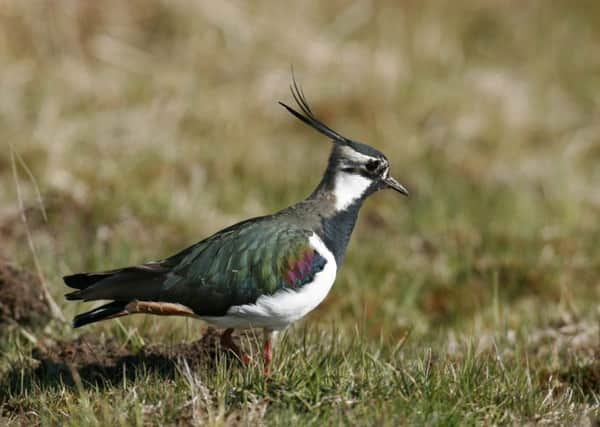Country & Coast: Species with so many names is a sight to behold


Indeed, if you turn left on the south side of the bridge and keep driving towards Grimsby you will eventually see road signs for a built-up area along the Humber known as Pyewipe, a relic from last century when this medium-sized wading bird was far more numerous on that stretch of shore than it is today.
But travel westwards to the Pennines and up into the Yorkshire Dales and you will find the same bird variously referred to as the lappy or the peewit. No other species in the UK has so many colloquial names, a consequence of the lapwing’s familiar double-note call being interpreted in different local dialects.
Advertisement
Hide AdAdvertisement
Hide AdI thought about this at the weekend as I shivered on the edge of a flooded Airedale meadow near Cononley and watched a flock of 500-plus lapwings, locally called tuets. They were mostly silent, though, for the wheezy call is part of their mating display or uttered as a shrill alarm when humans to get too close to their nests. Years ago, I used to do an acceptable imitation of their liquid “pee-weet” by partially holding a finger over the air outlet of a bicycle pump then quickly pushing and pulling the piston.
Although it’s the bird’s call that gets all the attention, when viewed through binoculars the plumage deserves to be more appreciated. Lapwings really are among our most beautiful birds with their seemingly black wings appearing oily blue-green in sunlight and wispy crests adding an elegance which few other species can match.
Eventually, a passing peregrine spooked the Airedale flock into the grey sky and provided me with an opportunity to admire the bird’s unique flight. Its has slow, almost laboured wing beats while regular tumbles and twists make it hard for even the agile peregrine to follow.
This erratic flight provided the lapwing with its proper name, which is derived from the Old English Hleapewince, meaning “leap with a waver in it”. These aerobatics are best seen between February and late summer when the big winter flocks disperse and paired-up birds scatter across farmland and areas of upland pastures to build their nests.
Advertisement
Hide AdAdvertisement
Hide AdLarge winter flocks like the one in Airedale paint a misleading picture of lapwing numbers. The bird’s conservation status is now Red, meaning it’s at risk of decline. The RSPB estimates that of 650,000 birds spending the winter in the UK more than half move to the Continent, leaving a breeding population of 140,000 pairs. They are still widespread on Yorkshire’s higher ground and in less-grazed lowland fields, but if you get too close to their nests the adults sometimes put on brilliant performances, feigning injury by dragging wings along the ground to lead intruders away from the nest.